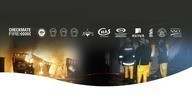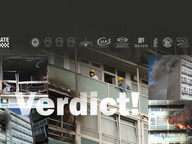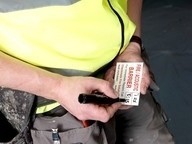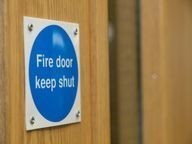This Saturday marks one of the nation’s grimmest anniversaries. It has been 30 years since the King’s Cross fire in London.
On 18 November 1987 at 7.30 pm, a horrendous blaze broke out at the underground station serving King’s Cross and St Pancras stations: 31 people were killed and 100 injured. This tragedy is marked by a tiny plaque in the station, at the top of the escalators It’s an especially sombre memory in the light of the Grenfell Tower fire this year, which caused an estimated 80 deaths and 70 injuries – incredibly, an exact figure has not been arrived at even now.
Initial reports stated that Twenty-seven people died and dozens were taken to hospital after breathing in smoke after the fire broke out under an escalator inside King’s Cross underground station. More than 150 firefighters and 30 engines were involved in searching tunnels for more people who were trapped underground.

Rescuers used lighting equipment borrowed from television camera crews, but almost two hours after the blaze started they were unable to get more than a few yards into the station.
Though relatively small to begin with, the fire’s heat soon ignited any nearby flammable materials, and at around 7.45 pm a 600°C ball of fire and smoke exploded up from the escalators into the ticket hall, killing or seriously injuring those who remained there.
The fire started when a discarded match or cigarette end set light to dry rubbish under a wooden escalator. The station – the busiest in London – was full of commuters at the back end of the rush hour and, a few minutes after the fire had started, a huge ball of flames swept up the escalator and into the crowded ticket hall. Moments later, smoke could be seen coming out of the station’s street-level entrances as panic-stricken commuters emerged. More than 150 firefighters wearing breathing apparatus fought the blaze and searched for survivors.
What has changed?
Following the Kings Cross fire, a public enquiry was quickly convened and concluded in 91 days. The Grenfell inquiry is expected to take much longer. The 1987 inquiry noted that, although smoking on London Underground trains had already been banned in July 1984 and extended to all sub-surface stations after a fire at Oxford Circus, smokers often lit cigarettes on their way out from the escalators. The public enquiry concluded that a burning match which fell down the side of a staircase onto the escalator was to blame. The fire was not believed to have started deliberately.
Wooden escalators were phased out following the blaze and heat detectors and sprinklers were fitted.
Smoking was banned in all London Underground stations five days later. Victims were outraged that nobody was ever prosecuted after the public enquiry slammed the response of London Underground.
Part of a sad history of fires and disasters in the UK. Lessons learnt?
The Kings Cross fire was another in a sad list of disasters from the Ronan Point Collapse in 1968 when four died and 17 were injured when an entire corner of a new block of flats in Newham, east London, collapsed.
The Summerland Fire in 1973 was an inferno at an indoor leisure complex in Douglas, on the Isle of Man, killing 50 people – mainly holidaymakers – after they were trapped while the roof melted.
At the Bradford City Stadium in 1985 a fire at a third division match between Bradford City and Lincoln City killed 56, including 11 children, and injured hundreds more.
The blaze is believed to have begun when a dropped cigarette lit rubbish under the wooden seats of the wooden Main Stand at Bradford City’s Valley Parade stadium
Lakanal House in 2009: A blaze at Lakanal House tower block in Camberwell, south east London, killed three women and three children. Those who died all lived on the 11th floor. They were advised by 999 operators to stay in their homes, believing fire safety measures would stop the flames and smoke reaching them.
In the wake of the Grenfell Tower fire this year, it has been claimed the lessons of the tragedy eight years before have not been learned.
Let’s hope that the importance of passive fire protection and building regulations can finally be revisited with the sensibility required to ensure that lives and livelihoods are protected in the future.
In other news...

Lakanal House: The Verdict
On 3 July 2009, six people died in a fire at a council-owned tower block in south London. The inquest into their deaths found opportunities to prevent the tragedy were

Compartmentation in Residential Buildings
Passive fire protection regulations can be traced back as far as the 17th century, but there is still work to do to ensure modern standards are correctly implemented.

Why Fire Doors are so Important
A fire door is one of the most important fire safety products on your premises. It will prevent the fire or smoke from spreading across the building

Can You Afford Not to Ensure Your Passive Fire Protection is Up to Standard?
Passive fire protection is a very effective means of protecting your building from fire but this important and effective measure is sometimes overlooked for financial reasons. Yet, can you really afford.


















